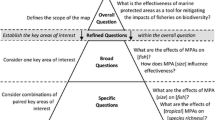Summary
Several statutes in California require either the preparation of a geologic report based upon site investigations or of a broader report, containing information on geologic conditions, prior to approval of specified types of development. This paper relates to compliance with the intent of statutes that govern construction of hospitals, construction of structures in hazardous fault zones, or projects that will have a significant effect upon the environment. Analysis of reviews of these reports indicates that initial reports tend to be inadequate for their intended purposes, and improvement is noted only after a review and feedback process.
Report inadequacies, as indicated during review by staff of the Division of Mines and Geology, led to the development and wide distribution of guidelines to assist in report preparation and of check sheets to further aid in the review and feedback process.
The review process has proved necessary to identify at least minimum standards of adequacy. The feedback process closes the information loop, leading to the requirement for acquisition of and reporting on geologic data adequate to the needs of the project. Thus the reviewer helps enforce the laws. Ultimate success depends upon complete communication among all concerned parties.
Résumé
Plusiers ordonnances en Californie requièrent ou bien la préparation d’un rapport géologique basé sur des investigations sur place ou celle d’un rapport plus étendu contenant des renseignements sur les conditions géologiques, avant l’approbation de certains types donnés de développement. Cet exposé traite de la manière de se conformer aux intentions d’ordonnances gouvernant la construction d’hôpitaux, la construction de structures dans des zones de failles dangereuses ou des projets ayant un effet significatif sur l’environnement. L’analyse des revues de ces rapports indique que les rapports initiaux ont tendance à ne pas être suffisants pour répondre aux intentions des ordonnances en question et cette situation ne s’améliore qu’à la suite d’une revue et d’une procédure rétroactive.
L’insuffisance des rapports, telle qu’indiquée au cours d’une revue faite par le personnel de la Division des Mines et de Géologie, a conduit au développement et à la distribution étendue de grandes lignes destinées à faciliter la préparation des dits rapports et de feuilles de vérifications destinées à faciliter leur revue et la procédure rétroactive.
La procédure de revue s’est avérée nécessaire pour identifier au moins les standards minimum de suffisance. La procédure rétroactive ferme la boucle des données informatives et conduit aux conditions d’acquisition et de reportage de données géologiques suffisantes pour répondre aux besoins des projets. Ainsi la procédure total de revue aide à respecter les intentions de la loi. La réussite finale dépend d’une communication totale entre tous les partis intéressés.
Similar content being viewed by others
References
ALFORS John T. — BURNETT John L. — GAY Thomas E. Jr. (1973) : Urban geology master plan for California: California Division of Mines and Geology Bulletin 198, 112 p.
AMIMOTO Perry Y. (1974): Review of new hospital sites for seismic safety: California Geology, v. 27, no. 5, p. 110–113, California Division of Mines and Geology.
AMIMOTO Perry Y. — SLOSSON James E. (1975) : Guidelines for geologic/seismic considerations in environmental impact reports: CDMG Note Number 46, California Division of Mines and Geology, 2 p.
HART Earl W. (1975) : Guidelines for evaluating the hazard of surface fault rupture and suggested outline for geologic report on faults, CDMG Note Number 49, California Division of Mines and Geology, 4 p.
HART Earl W. (1976) : Fault hazard zones in California, Alquist-Priolo Special Studies Zones Act of 1972 with index to Special Studies Zones Maps: California Division of Mines and Geology Special Publication 42, Revised Edition, 27 p.
HART Earl W. — WAGNER David L. (1975) : Investigations of surface faulting / a critique, Abstracts, 18th Annual Meeting, Association of Engineering Geologists, p. 24.
HART Earl W. — WILLIAMS John W. (1976) : The geologic review process: Association of Engineering Geologists, San Francisco Section, Committee on Standards and Practices, unpublished draft guideline, 6 p.
LEIGHTON F. Beach (1975): Role of geotechnical consultants and reviewers for the County of San Mateo: California Geology, v. 28, no. 8, p. 178–181, California Division of Mines and Geology.
MURPHY George H. (1976): Geologists and environmental impact reports: California Geology, v. 29, no. 1, p. 22, California Division of Mines and Geology.
Author information
Authors and Affiliations
Rights and permissions
About this article
Cite this article
Stewart, R.M., Hart, E.W. & Amimoto, P.Y. The review process and the adequacy of geologic reports. Bulletin of the International Association of Engineering Geology 13, 83–88 (1976). https://doi.org/10.1007/BF02634766
Published:
Issue Date:
DOI: https://doi.org/10.1007/BF02634766




